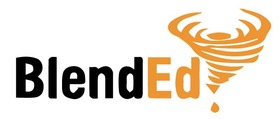Providing Independent Student Learning Experience

Levels of implementation for indicator 1.6 from Blended Observation Rubric
Using Playlists for Independent Learning - Whitney Maulsby
I have started to use playlists in my classrooms, and I love it! And so do my students! When trying to review chapters in novels, I create several different activities within Schoology. Students are required to participate in a few of these activities but can then choose where to go. A playlist gives them opportunities to use their creativity, strengths, interests, and opinions to explore the novel on a much deeper level. Having the students create their own projects shows me their progress in a much better way than worksheets, tests, or quizzes. This option also allows them to work at their own pace, which is very helpful.
I have added screen shots of an example playlist on Schoology for The Outsiders. The playlist includes the below items:
1. Discussion post
2. My Favorite Meal PicCollage
3. Randy's Story video summary
4. Two-Bit Selfie media album
5. Randy's Mustang Notability drawing
6. The Outsiders Wordsearch
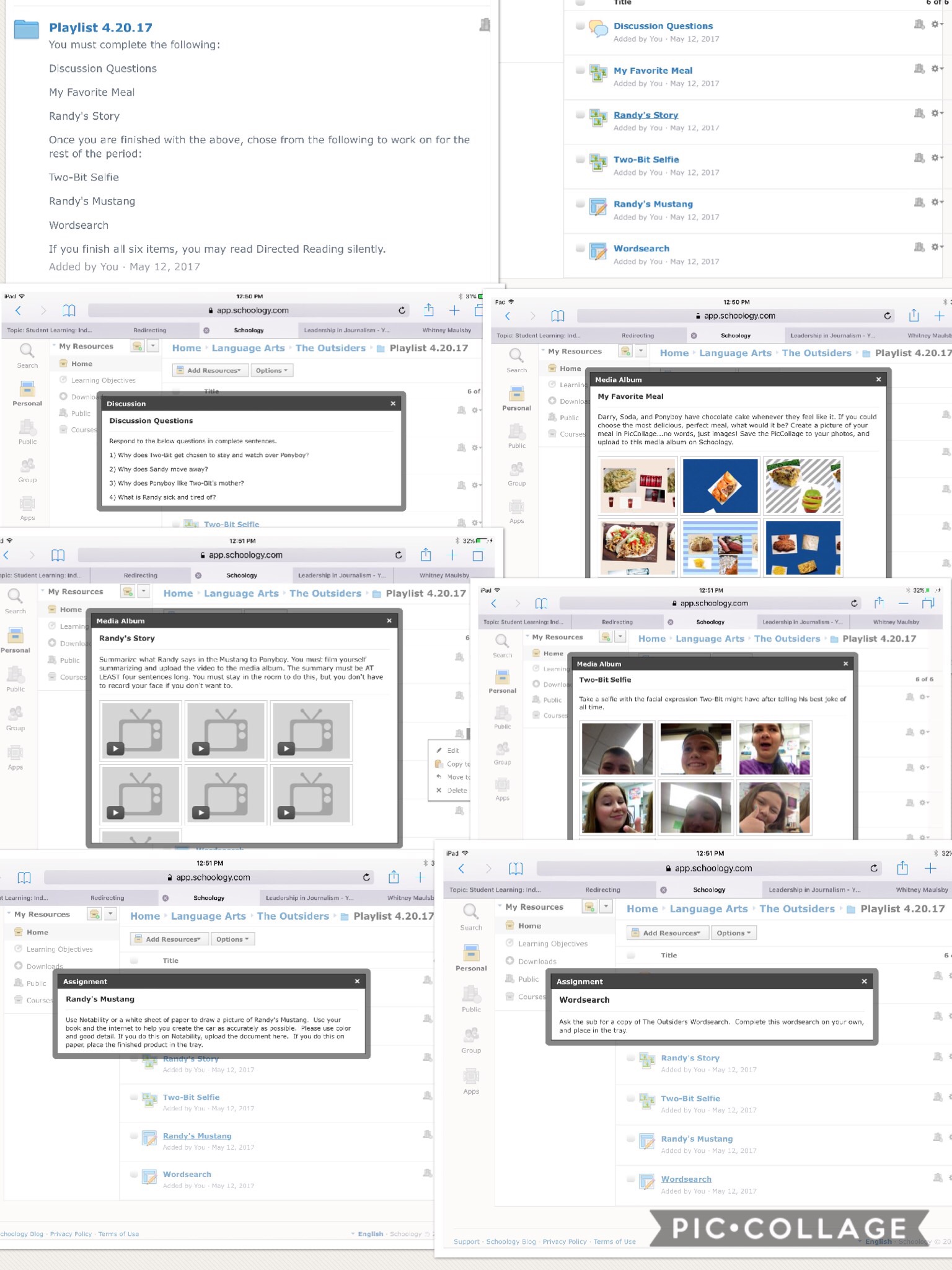
Example of Independent Learning
There is no way I would be able to grade every playlist item for up to 80 students each time. Because of that, I typically choose to grade one or two of the items. When grading the discussion questions, I use something similar to the attached rubric. Sometimes I do offer extra credit to students who complete the entire playlist. However, they are allowed to work on it after class if they need more time because I don't want it to be a punishment if they can't move through all of the items during class.
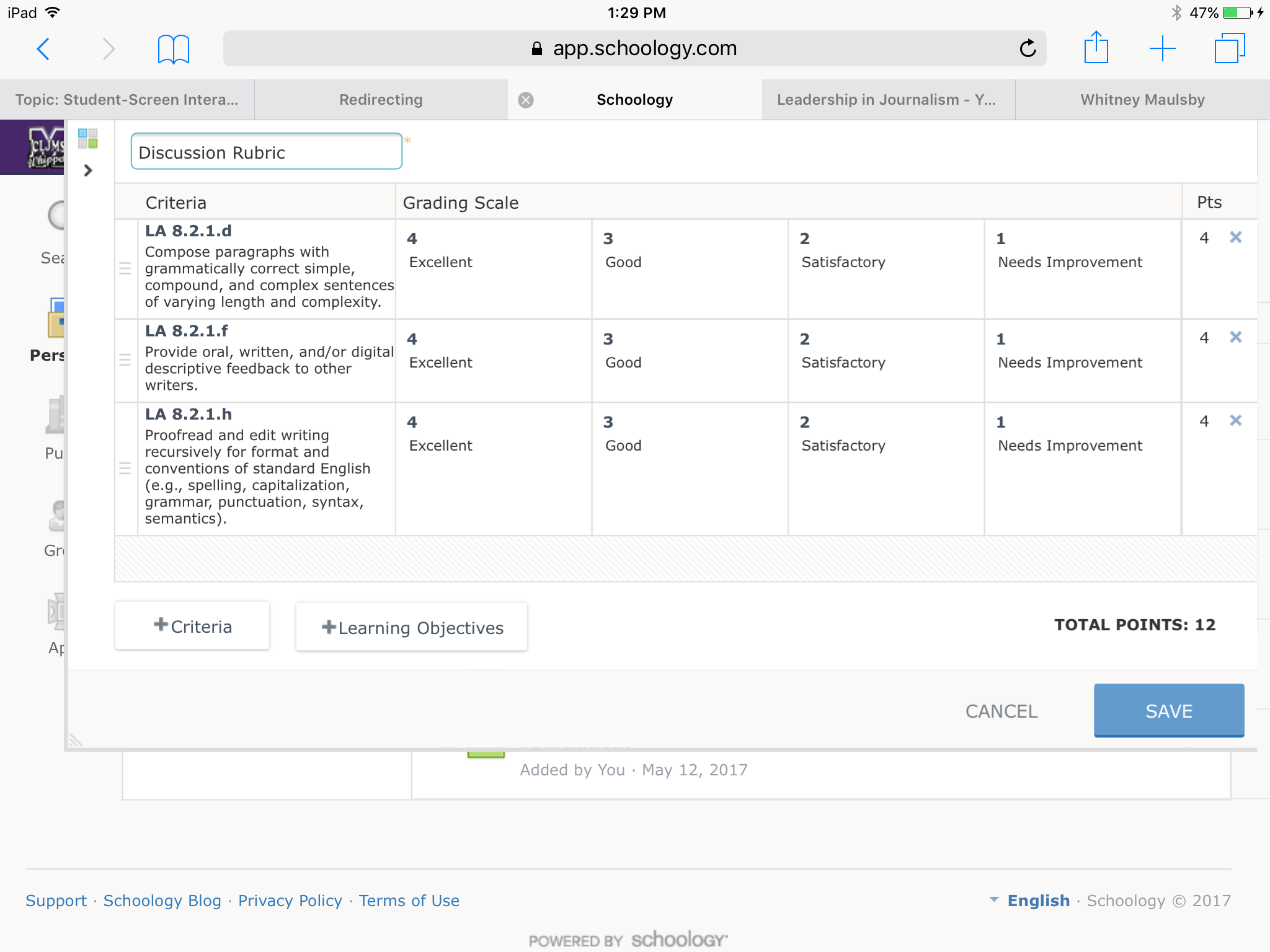
Discussion Rubric
Independent Learning with Choice - Lauren Rabourn
We often run into the problem of students being gone for a number of reasons throughout the school year - especially in a small school. Our students are gone from school numerous times a week for a variety of different activities, scheduled appointments, vacations, illnesses, etc. You name it, they will miss school for it. A teacher's schedule is no different as we are all involved as coaches, going to PD opportunities, taking care of our own sick children, a sick day for ourselves, etc. It happens WAY more often than any of us like.
I have also discovered that in some of my classes, students just really like to work at their own pace and complete learning tasks on their own schedule with their own ideas. This isn't to say that they don't like to work in small groups, too, but sometimes they just want to do what to do things their way. With that being said, I do occasionally throw in a small group assignment or project OR allow the option to work with a partner or small group. Students are usually never required to have to work independently.
The example I am going to share comes from my Contemporary Novels class. I decided to do something different this year with the class since there was a large variety of interests from the large group of students I had. After nearly completing my required reading list, students were given the opportunity to complete an Independent Novel Study. All students were able to select a novel of their choice to read for this unit. They all had the same general weekly assignment and final project choices, but they were working independently and able to have some choice along the way.
Here is the information for this unit as it was presented to the class:
Link to Smore page for example
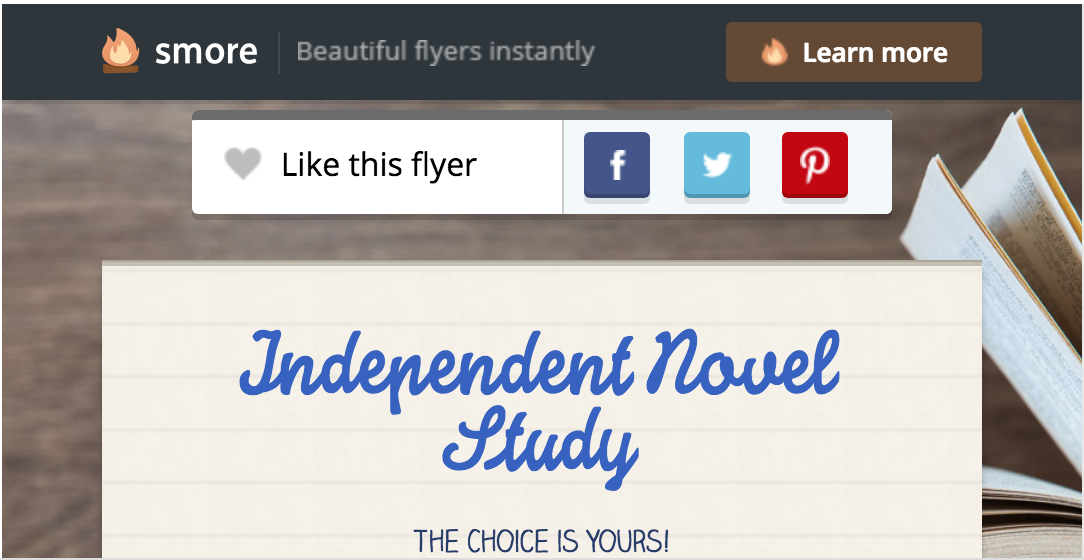
Smore Example
Students loved this idea! There were a few that chose to read the same book, but not many out of the 30+ students I had in the class (split into 2 sections). As independent learners, these students were super engaged in what they were doing. The weekly reading assignments and response/reflection assignments were outstanding - I couldn't wait to read and/or view them, because I wanted to learn more about the novels they were reading. I wanted to know what they were thinking about the reading and what connections they could make. It was a huge learning experience for them as well as me! I found myself responding to these weekly assignments with a lot of feedback, including a number of questions and excitement I had in anticipation for the next week's posts. Some students even found it fun to one-up the previous week's post based on my feedback in order to see what response they would get!
I did allow students to either write out their response/reflection or they could video record themselves with the same information. My writers in the group wrote, a lot. My performers and talkers of the group recorded themselves. I really liked giving students this option because sometimes it is just easier for them to say what they want rather than trying to get that down on paper. And some students really performed - they dressed up in costumes, used random props, spoke in different voices, etc. All very entertaining!
Here is the unit created on Canvas: There is the description of what students will actually be doing (the smore flyer shown above), the categories and lists of final project options - if students would click on these they would see further explanation of each project, the scoring rubric, and an example, the weekly assignment and place to submit that assignment are listed, and then a place for students to submit their final projects.
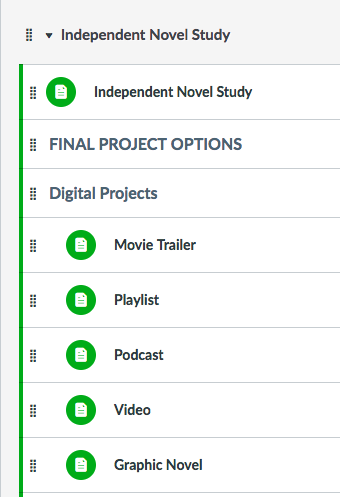
LMS Record of Independent Learning
Some final projects submitted by my students:
The first one is a movie poster project with the additional writing task.
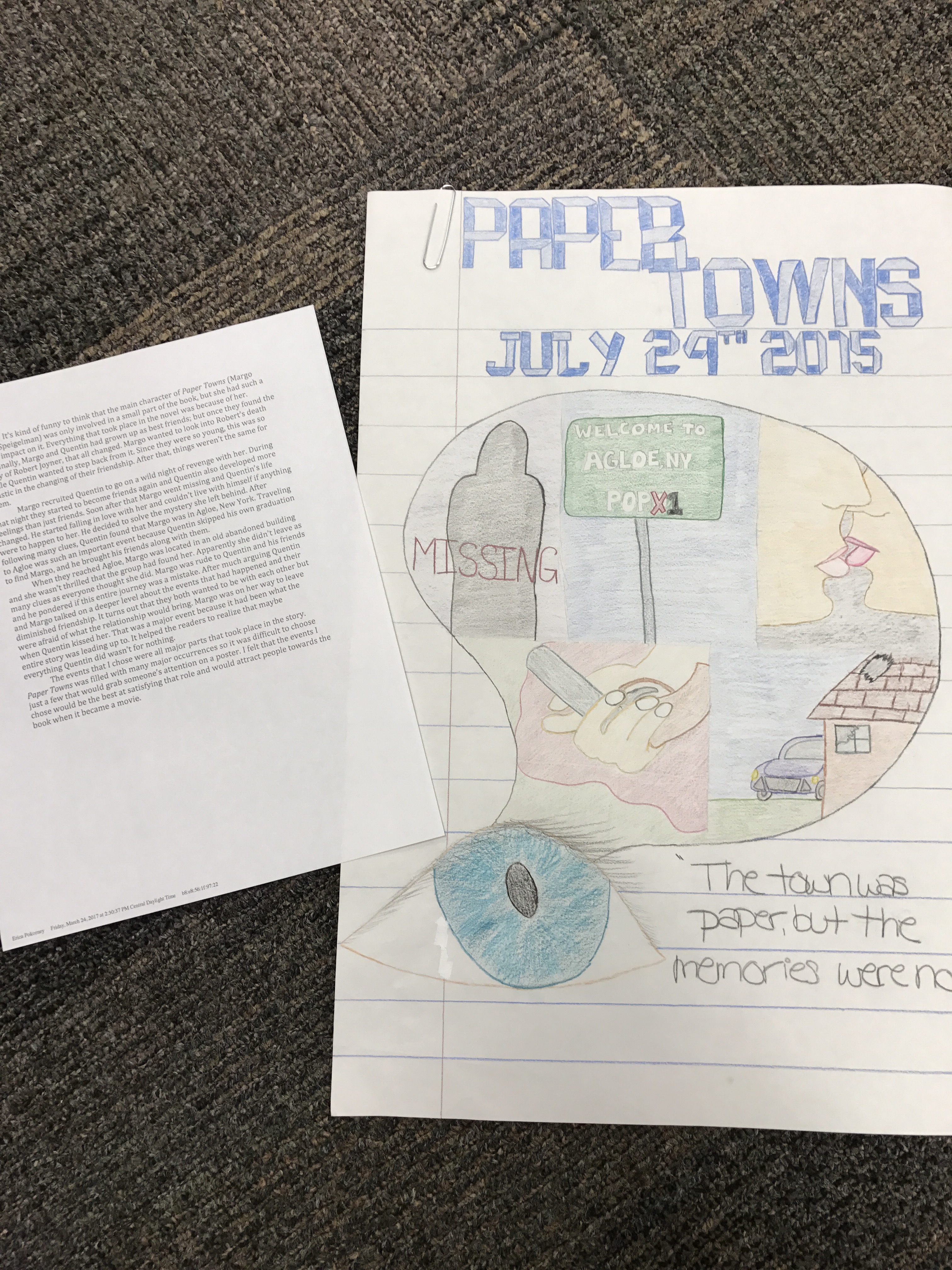
Movie Poster Project
The next one is a comic strip - this particular student chose to draw and write his own comic strip (students had the option to use a online tool as well).
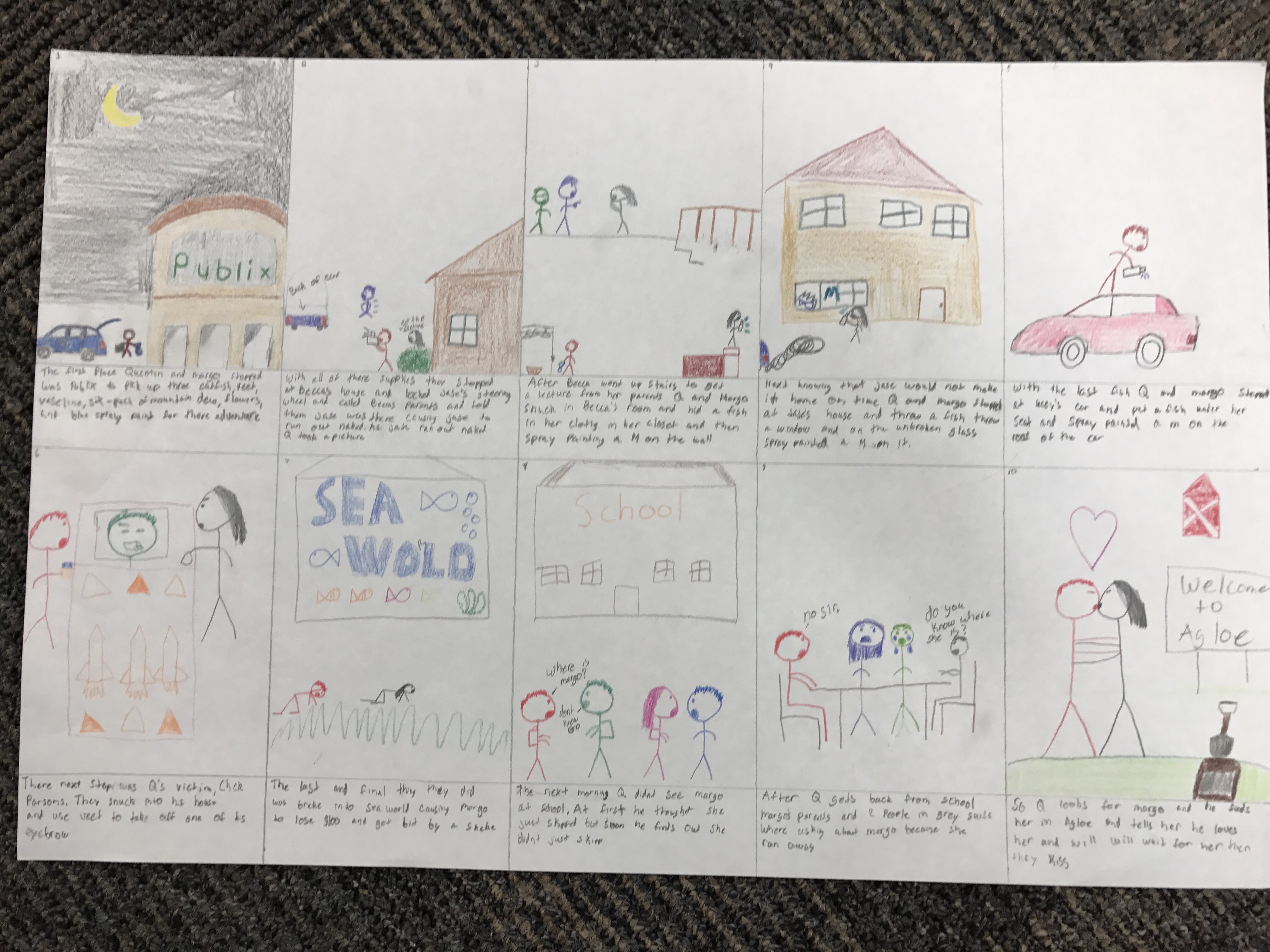
Comic Strip Poster
The next is a pic collage of an interview project, some playlist projects, and some mobile projects.
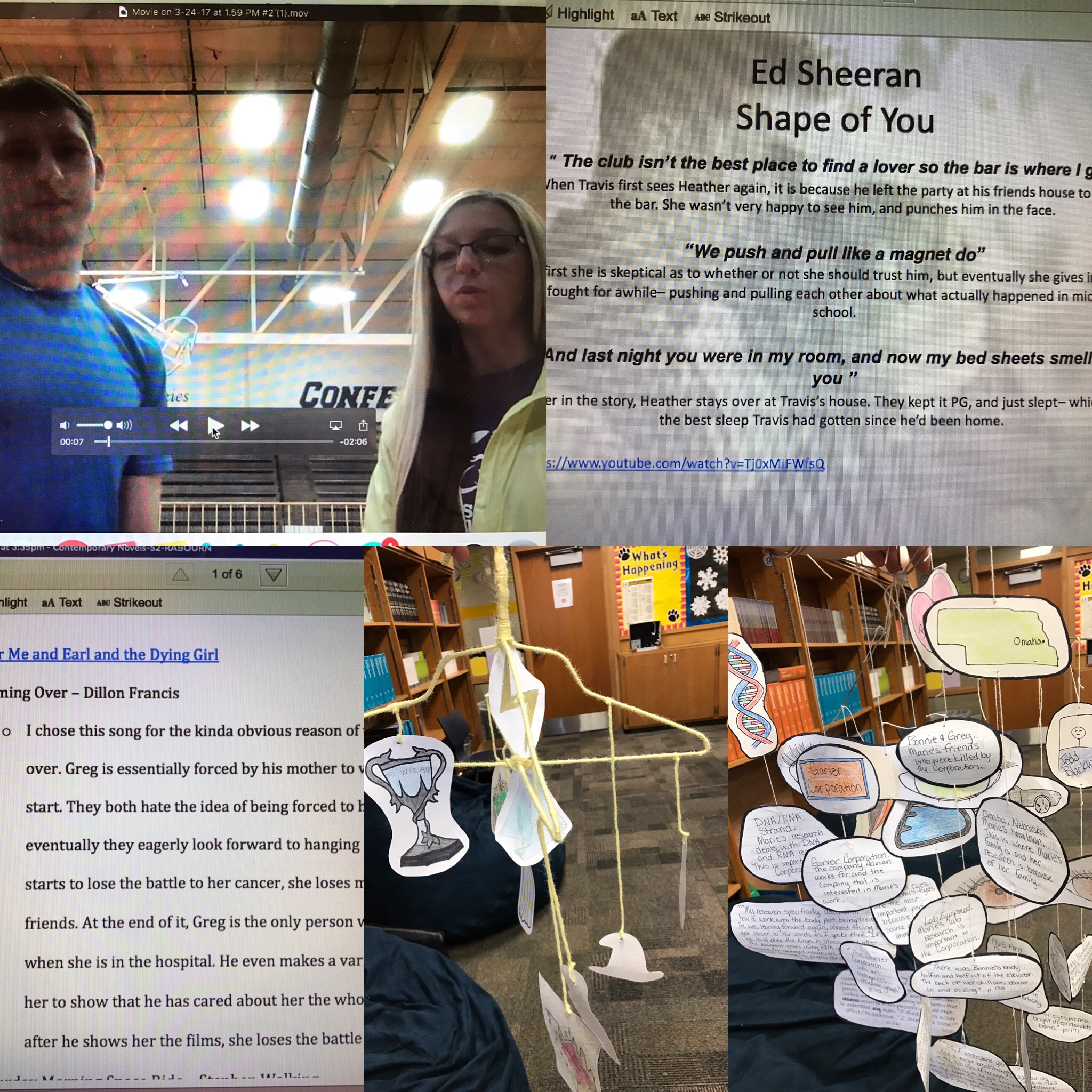
PicCollage Novel Study Project
And the last is another pic collage of some movie posters and a shadow box project.
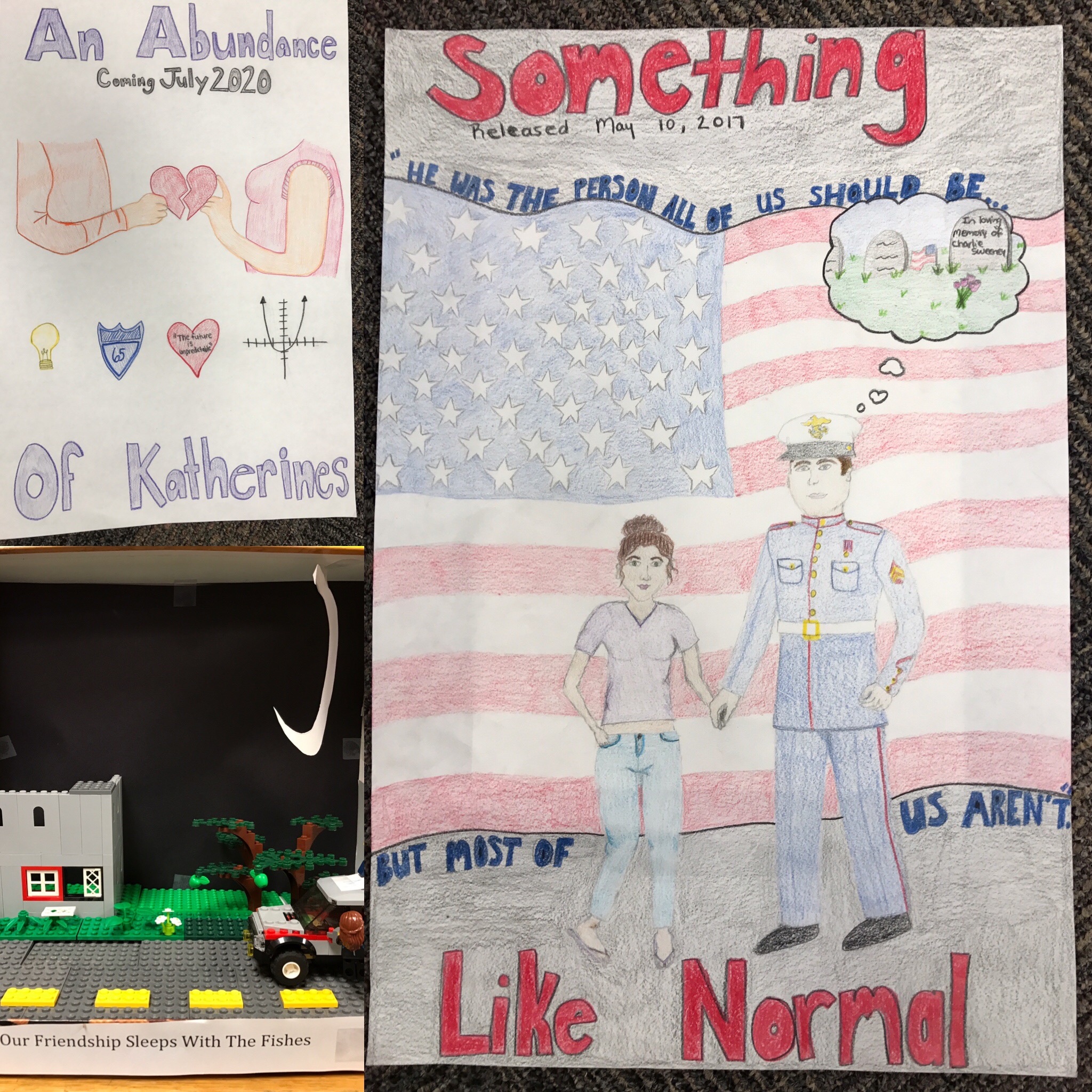
Pic Collage of novel study
These are just a few of the many great projects that were submitted, and the pictures don't do these ones justice. I had a number of game boards submitted, some poetry, a few newspapers, and videos created as well. As you can imagine, 2 project submissions for each of 30+ students! I didn't get pictures of all of them to include here, but you get the basic idea!
Using HyperDocs to Allow for Pace, Place and Path - Jen Kastanek
I like to use Hyperdocs to create lessons. This is an example of one part of one unit I used in my 10th grade English class. I know that I can set this up the same way in our LMS system. But I didn't have access to my LMS system at the time I was creating this so I used a Google HyperDoc instead and I love the results. I kept in mind that my students and myself were potentially going to be absent from class a lot due to upcoming activities, so I designed this so students could choose their pace, place, and still have some path choices as well. I loved the results. One unexpected bonus of using a shared document for my classes to record some of their answers was that it created a bit of a buzz in class when some students would get to that point and read others ideas and answers. They would naturally comment or remark to each other out loud at their tables. The result of this was that the students that were moving along at a slower pace wanted to know what all the buzz was about, so it helped them stay motivated and on task. Below is a picture of the assignment and you can see how a student would be able to progress on their own throughout the assignment. Next time I use this, I think I will add some more links under the enrichment tab. I overlooked it at the time I created it.
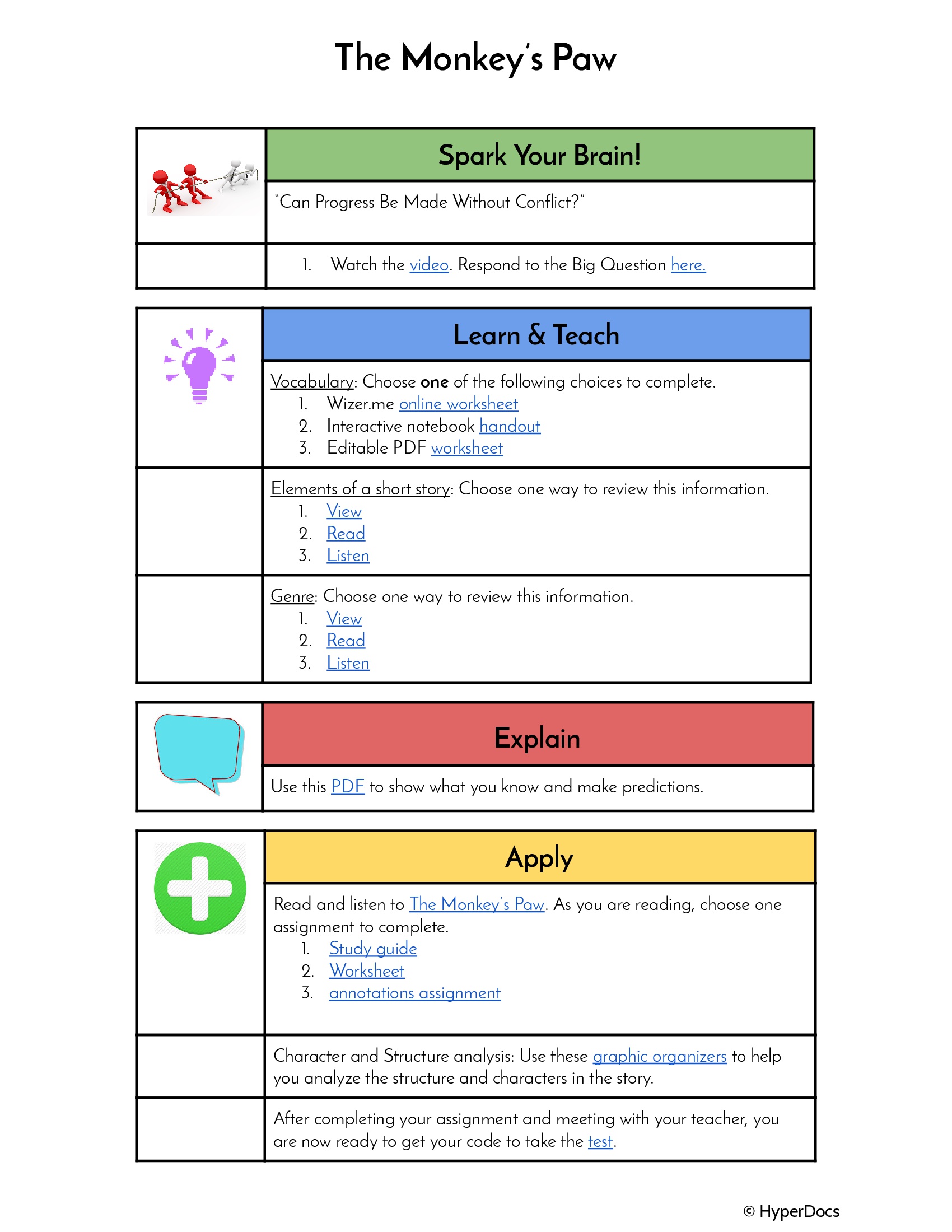
Monkey's Paw HyperDoc
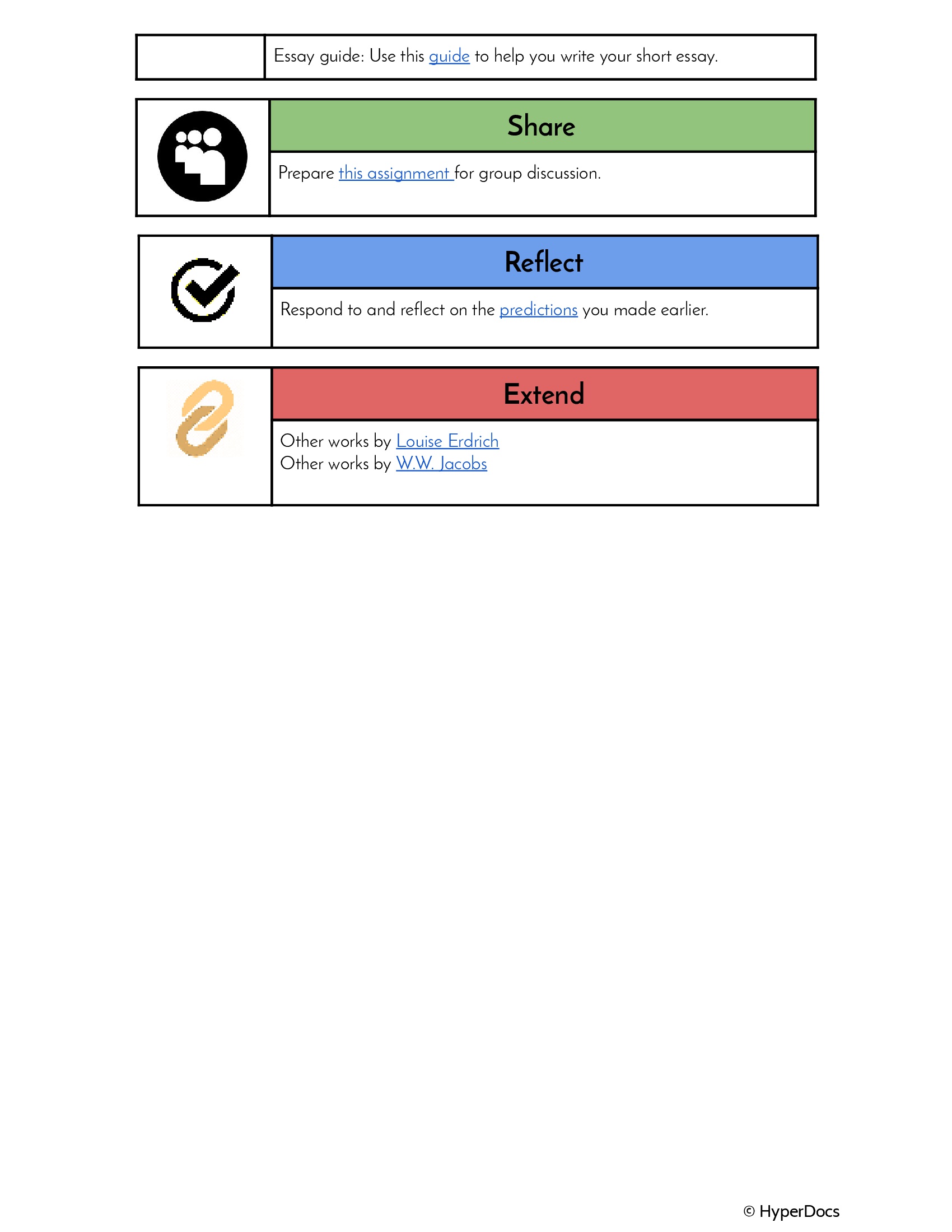
Monkey's Paw HyperDoc2
Technology to Support Independent Learning - Marshall Payer
Learning independently in my math classrooms has become easier with the help of technology. One of the methods that I use directly shows how easy it is for students to progress through a lesson without even having to be told what they should do next. The method that I used extensively in my Algebra class is, what I called, the "independent split" method. The beginning of the lesson starts with a formative quiz over the previous day's content. Once the procedure was replicated a few days in a row, students knew to go to socrative.com and enter the passcode (which was the same every day) and start working on their quiz. The results came back to me and looked something like this:
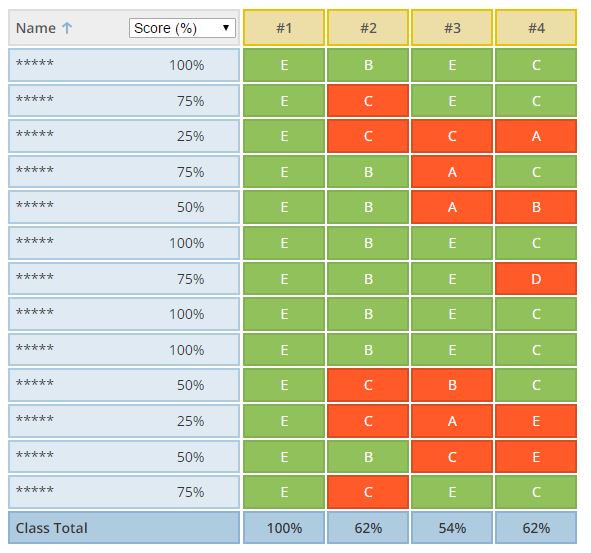
Independent Split Method
My expectation was that every student was able to answer all the questions correctly and then they would be able to move on and independently work on the topic for the day. Again, when the procedure was in place that if they scored a 100% on the quiz they could work individually, students like the 5th student from the bottom were able to move on to the next step. They would immediately know that they could go to the learning management system and read the options they had to go through the lesson. An example of the guidelines for a lesson in Algebra is shown below:
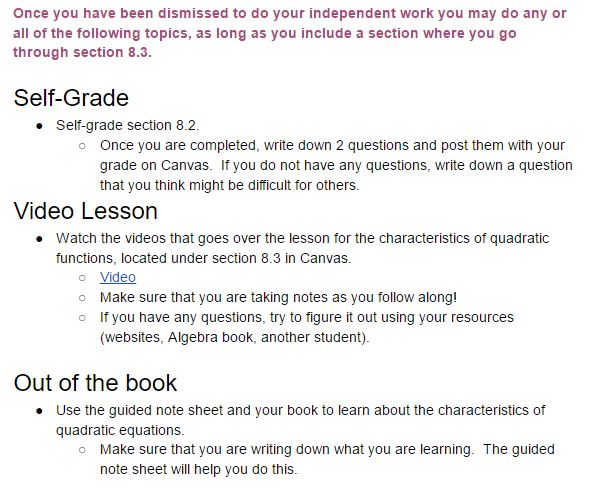
Independence Expectatainos
With the help of the textbook and online videos, students were able to independently continue their education while others refreshed the previous day's topic. Once the students who didn't originally get a 100% were completed with the requirements to continue for the day, they too were able to work individually.
Not every student works at the same pace, which is why being able to advance individually gives each student a comfortable pace to learn.
